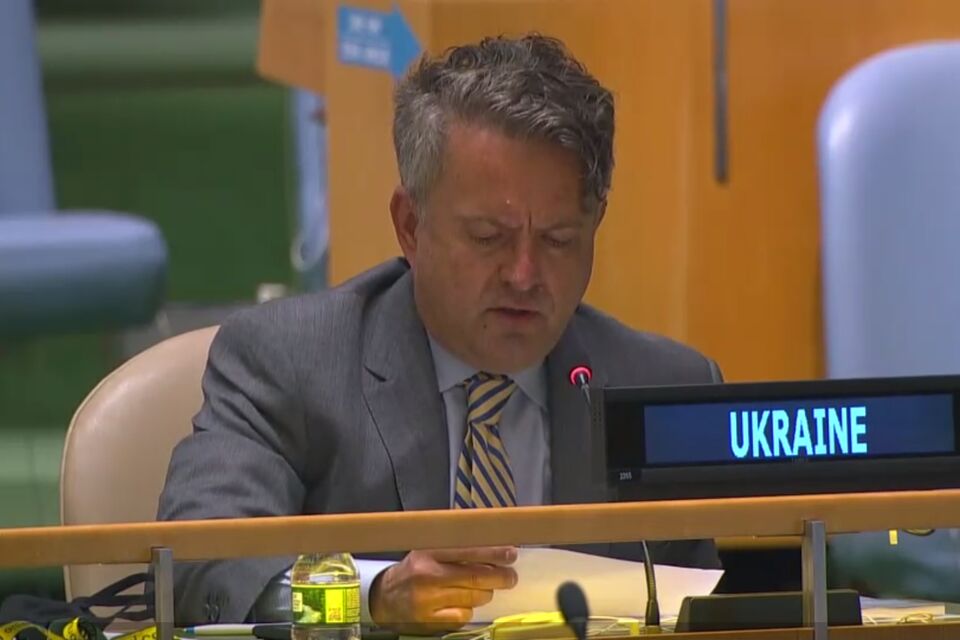Виступ Постійного представника України при ООН Сергія Кислиці на комеморативному засіданні ГА ООН щодо 35-х роковин Чорнобильської катастрофи

Mr. President,
On the thirty-fifth anniversary of the Chornobyl catastrophe, we remember with respect and admiration those who lost their lives or suffered in the emergency and recovery operations.
Chornobyl accident taught the international community an important lesson and made us think deeper about the risks of nuclear energy.
Never before had the world suffered a human-caused catastrophe of such a magnitude. It has changed the lives of generations and has had a long-term impact on the environment.
On behalf of Ukraine, I would like to thank our partners for not leaving my country on its own in the face of a terrible enemy – radiation.
Throughout the years, Ukraine and international organizations have been working together to overcome the consequences of the Chornobyl catastrophe by implementing projects aimed at sustained recovery and development of affected districts, mitigating the long-term social, economic, and environmental effects of the Chornobyl catastrophe.
We are grateful to the international community for the solidarity and comprehensive assistance provided within the frameworks of the Memorandum of Understanding between Ukraine, G-7 countries and the European Commission on closure of the Chornobyl NPP by the year 2000 signed in Ottawa in 1995. Strictly fulfilling its international obligations, Ukraine finally shut down the Chernobyl nuclear power plant in 2000.
We appreciate the contribution of the European Bank for Reconstruction and Development (EBRD) - as a separate donor and administrator of funds of the international community.
Overcoming the impact of the Chornobyl catastrophe has become a remarkable example of international solidarity. Consolidated efforts and constructive cooperation with the international donor community resulted in а significant success. In particular, the projects of the New Safe Confinement over the Shelter object as well as Interim Storage Facility for nuclear fuel from the Chornobyl NPP (ISF-2 project) have already been completed.
The confinement is designed to isolate radioactive substances from the destroyed fourth reactor of Chornobyl NPP from the environment for at least 100 years. Its creation marked a new stage in ensuring nuclear safety in the world.
But the New Safe Confinement is not the end of the history of the Chornobyl disaster. It is only the beginning of crucial stage: transforming the Shelter into an environmentally safe system.
That is why it is critical to keep the issue of post-Chornobyl recovery high on the international agenda.
Mr. President,
Along with a history of courage and global unity, Chornobyl has been a history of disinformation efforts. The Soviet authorities desperately hid the truth from its own people and other countries.
May Day parade was held in Kyiv just several days after the deadly explosion and with radiation level being 150 times higher than acceptable one.
It was Sweden, not the Soviet Union, that first alerted the world about Chornobyl. The early detection by the Forsmark plant played an important role in forcing the Soviet authorities to open up about the disaster.
Against the backdrop of today’s challenges in information domain it is a powerful remainder that disinformation, just like radiation, is an invisible killer.
Mr. President,
Many lessons learned from the Chornobyl nuclear accident have helped the world to inform efforts to address other disasters.
The focus of the international community has moved away from emergency response measures only to include prevention, preparedness, recovery, and rehabilitation.
It is essential to give a strong voice for the human dimension of preparedness for and recovery from nuclear emergencies at the international level and incorporate that knowledge and experience into developmental programming worldwide.
In conclusion, I would like to stress that Chornobyl recovery efforts are closely linked to the 2030 Agenda and are fully aligned with the national plans for sustainable development of Ukraine.
We firmly believe that goal-oriented international cooperation will result in long-term solutions to complex problems triggered by the disaster.
Thank you.
